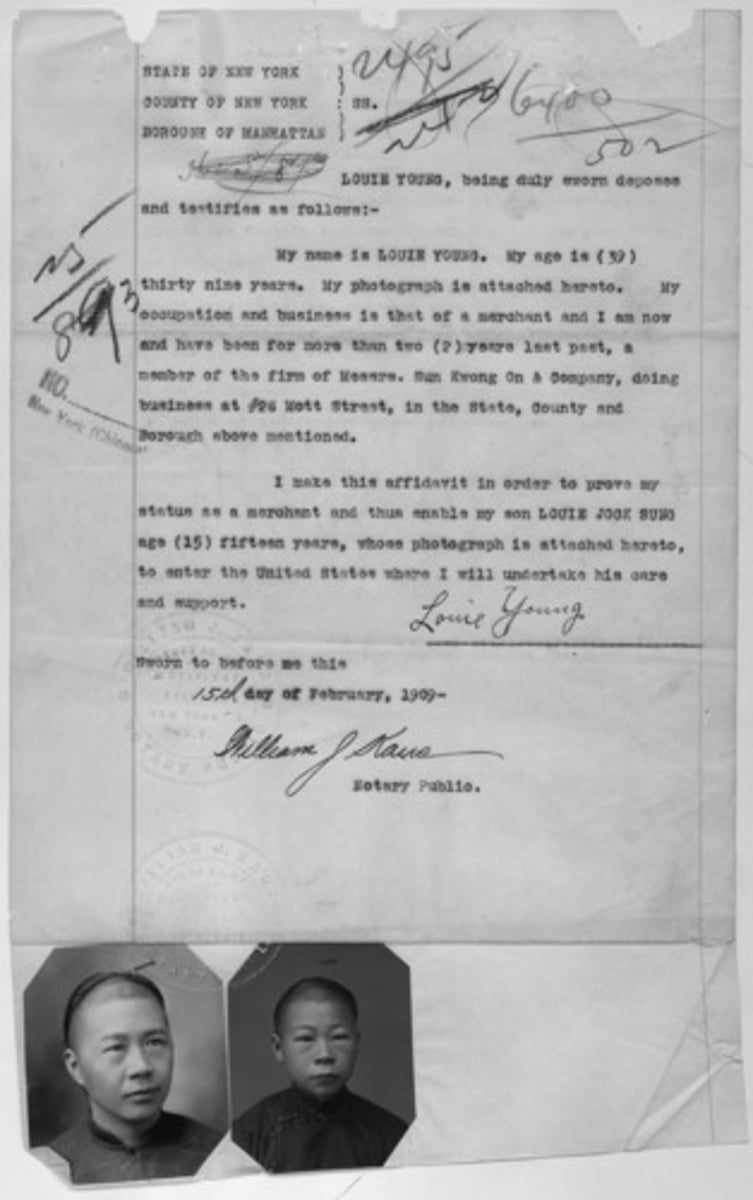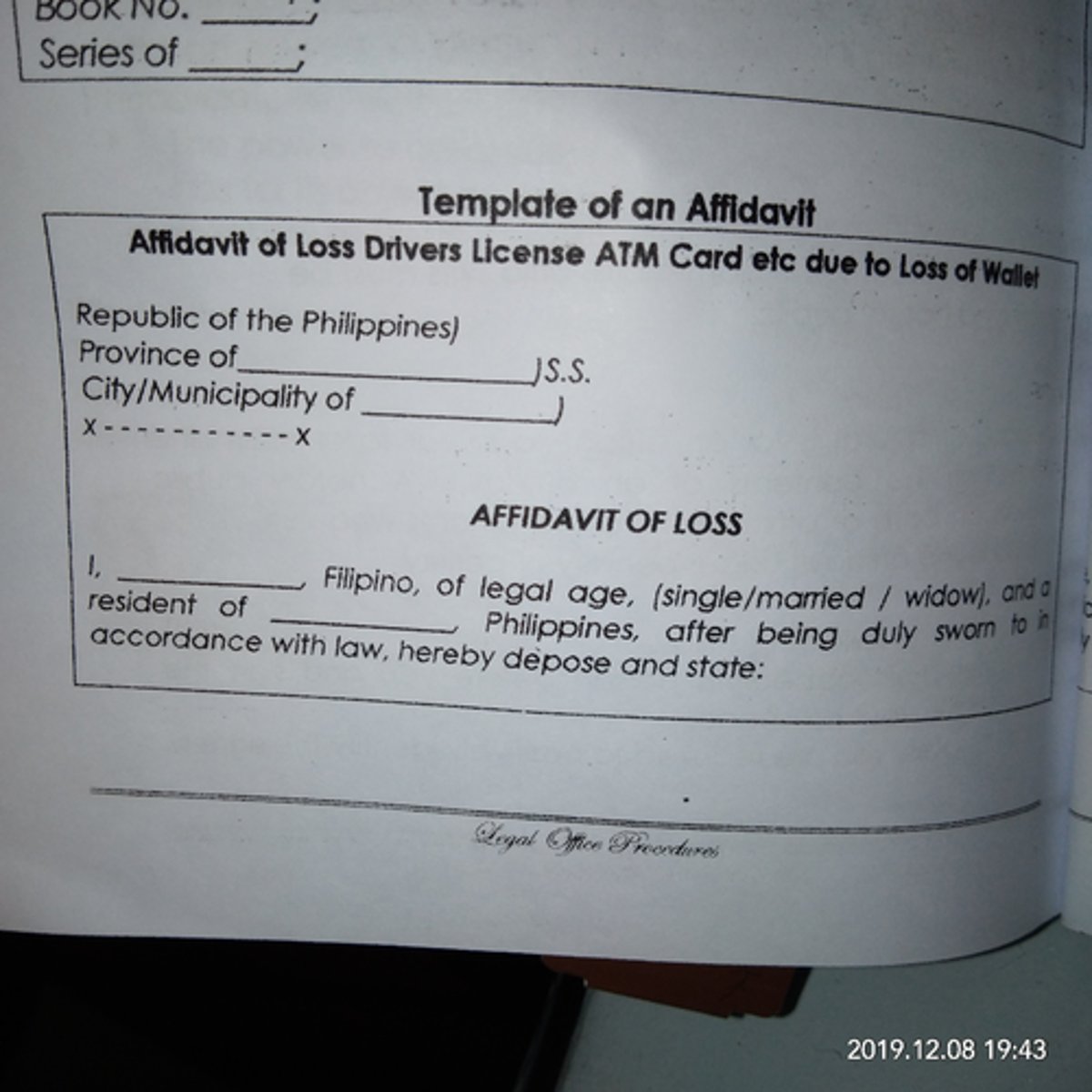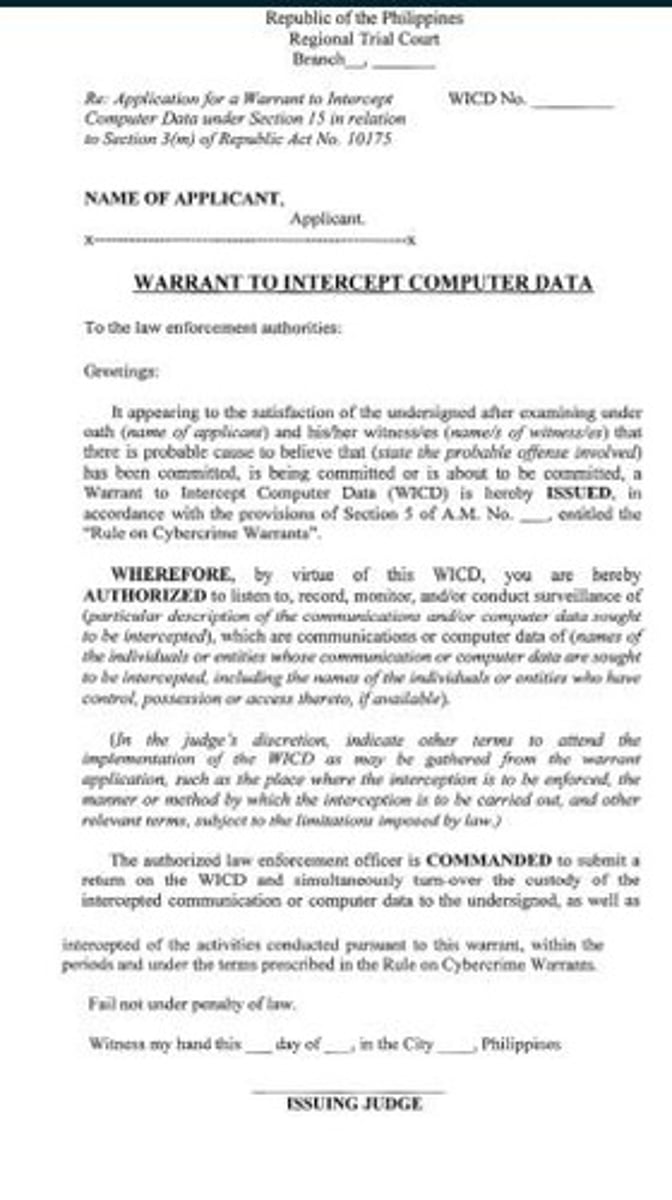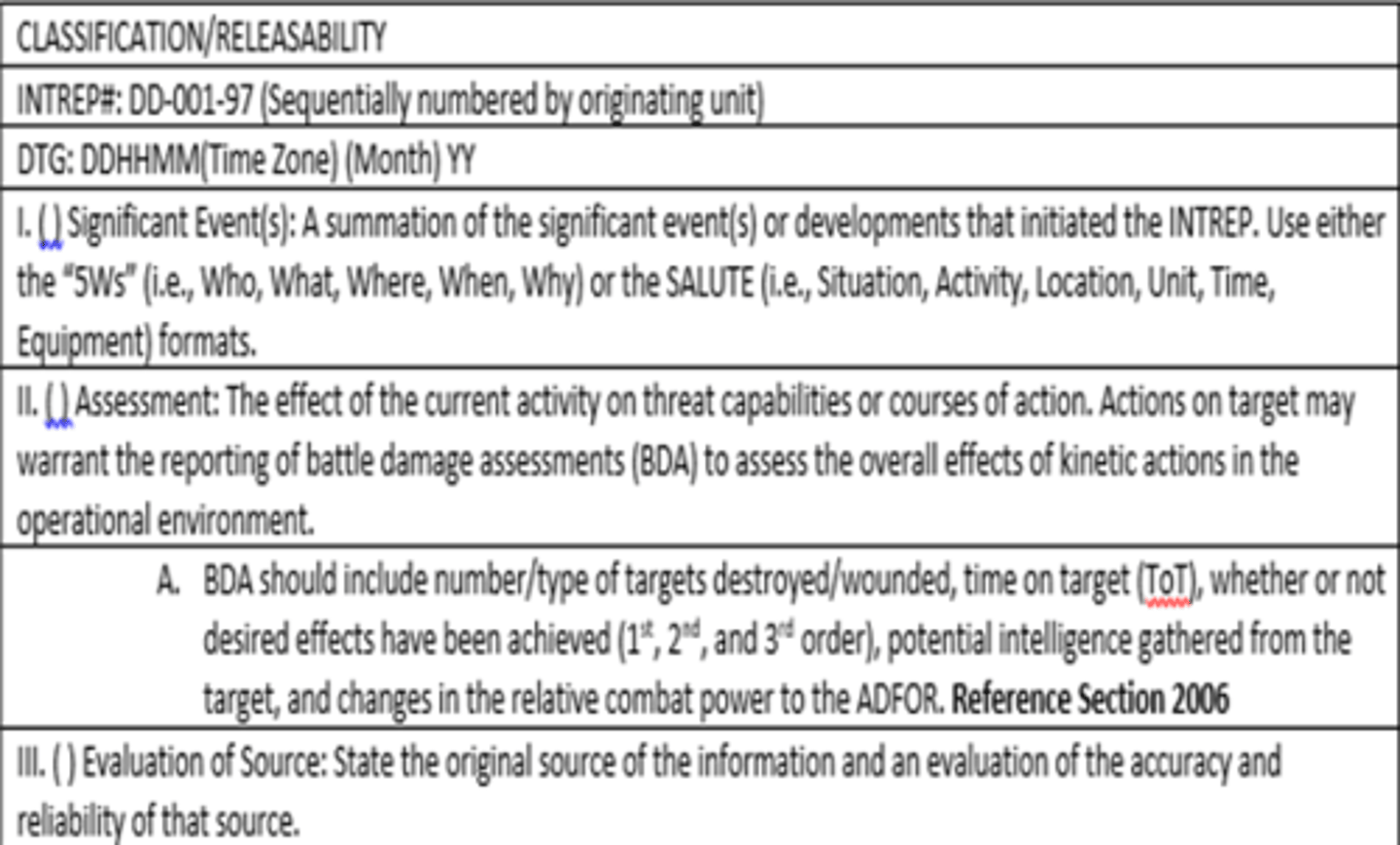CDI 7- TECHNICAL ENGLISH 1 AND 2 (LEGAL FORMS AND INVESTIGATIVE WRITING)
1/90
There's no tags or description
Looks like no tags are added yet.
Name | Mastery | Learn | Test | Matching | Spaced |
|---|
No study sessions yet.
91 Terms
Legal Forms
is an instrument or document to be employed in a legal transaction or a judicial proceeding that includes the primary essential matters, the appropriate technical phrases or terms, and any additional materials required to render it officially accurate, arranged in suitable and systematic order, and conducive to adaptation to the circumstances of the particular case.
Important guidelines in legal forms:
1. Language used must be in English
2. Correct choice of words
3. Proper sentence construction
4. Paragraphs must be impressive
5. Correct Citations
6. Correct form of legal document
Document
it is a written instrument, an agreement, a deed, a map, an object, a photograph or anything which proves a fact, an event, an incident, or transaction.
Private Document
A deed or instrument executed by a private person without the intervention of a notary public or other person legally authorized, by which documents, some disposition or agreement is proved, evidenced or set forth
Public Document
A document executed and acknowledged before a notary public or any person authorized to administer oath. It is also known as notarized document.
Notarization
the act that ensures the public that the provisions in the document express the true agreement between the parties. It converts a private document to a public document and renders it admissible in court without further proof of its authenticity.
Authorized to Perform Notarial Acts
1. Notary Public
- refers to any member of the Philippines Bar in good standing who is issued a Notarial Commission by the Executive Judge where the petition is filed.
2. Notary Public ex officio
- a government official who is clothed by law with general authority to administer oaths and to perform notarial acts within the limits of their territorial jurisdiction.
Settled
a term which refers to the rule that a private document is binding between the parties who executed the same, but not as to third parties.
Classification of Legal Forms
1. Business Forms
2. Judicial Forms
3. Special Proceeding Forms
4. Criminal Action Forms
Business Forms
the forms used in conveyancing, or of the forms of deeds,
instruments or documents creating, transferring, modifying or
limiting rights to real as well as personal properties, and other
forms related to business contracts or transactions.
Business Contract
is an agreement in which each party agrees to an exchange, typically involving money, good or services.
Business Transaction
an event involving an interchange of goods, money, or services between two or parties.
Judicial Forms
the forms which pertains to different kinds of pleadings,
applications, petitions, affidavits, motions and the like.
Complaint
A sworn, written allegation stating that a specified person committed a crime.
Motion
a formal request made to a judge for an order or judgment.
Answer
refers to a defendant's first formal written statement to a plaintiff's initial petition or complaint. This opening written statement will admit or deny the allegations, or demand more information about the claims of wrongdoing.
Cross claim
A claim filed by a defendant who believes that a third party is either partially or fully liable for the damages that the plaintiff has suffered and, therefore, should be involved as an indispensable party in the trial.
Writ of Mandamus
a special civil action whereby a court of jurisdiction commands an inferior tribunal, corp or person to perform a particular duty which the law requires to be done resulting from such office or trust.
Writ of Quo Warranto
is a legal term that translates to "by what authority?" It's a legal action used to challenge a person's right to hold a public office or corporate position. Essentially, it's a way to question the legitimacy of someone's claim to a specific role.
In simpler terms, a quo warranto proceeding is used to determine if a person has the legal authority to hold a particular office or position. If it's found that the person does not have the legal right to hold the position, they may be removed from office.
Writ of Prohibition
is a court order that directs a lower court or tribunal to stop exceeding its jurisdiction or acting beyond its powers. It's a legal remedy used to prevent a court or tribunal from making an error of law or acting without authority.
Special Proceeding
A remedy by which a party seeks to establish a status, a right, or a particular fact.
Petition for Habeas Corpus
a request for writ requiring a person to be brought before a judge or court, especially for investigation of a restraint of the person's liberty, used as a protection against illegal imprisonment.
Escheat
is a legal process by which property reverts to the state when a person dies without a will or known heirs. It's essentially a way to ensure that property doesn't remain unclaimed indefinitely.
Petition for guardianship
is filed at the event that the parent is deemed unfit
Criminal action
is the procedure by which a person accused of committing a crime is charged, brought to trial, and judged.
Affidavit
- A formal written statement a person makes before a notary or officer of the court outside of the court asserting that certain facts are true to the best of that person's knowledge.
- It is a written statement or declaration of facts which is voluntarily executed and confirmed by affiant and subscribed before a Notary Public or an officer authorize to administer oath.

Affidavit vs Sworn Statement
Affidavit requires to be notarized meanwhile Sworn Statement not required to be signed by a notary public.
Jurat
Latin for "to swear". It is a certificate attached to an affidavit or deposition to signify that the affidavit or deposition was properly made before a duly authorized officer.
Example : (SUBSCRIBED AND SWORN to before me this 10th day of October, 2023.)
Acknowledgment
is the act of one who has executed a deed in going before some competent officer or court and declaring it to be his act or deed.
Sworn attestation of the lawyer
a. The Judicial Affidavit shall contain a sworn attestation at the end, executed by the lawyer who conducted or supervised the examination of the witness
b. A false attestation shall subject the lawyer mentioned to disciplinary action, including disbarnment
Forms of Affidavits in Law Enforcement
1. Affidavit of Arrest
2. Affidavit of Complaint
3. Judicial Affidavit
4. Affidavit of Desistance
5. Reply Affidavit
6. Counter Affidavit
7. Rejoinder Affidavit
8. Affidavit of Denial for NBI Clearnce
9. Affidavit of Undertaking
10. Affidavit of Loss
Affidavit of Arrest (Arrest Report)
Is generally filled out by the arresting officer and states the facts and circumstances surrounding an arrest. The affidavit may state such facts as the information which led to the arrest and the observations made before and after the arrest occurred.
Affidavit of Complaint
a sworn written statement charging a person with an offense, subscribed by the offended party, any peace officer, or other public law officer charged with the enforcement of the law violated.
Judicial Affidavit
a sworn written statement from a witness in a case. It is a document that sets out the evidence that the witness wants to give. It is the witness's direct testimony. Under Judicial Affidavit Rule, Judicial Affidavit must be in question and answer form.
Deponent
The person being questioned in a deposition
Deposition
is a witness's sworn out-of-court testimony. It is used to gather information as part of the discovery process and, in limited circumstances, maybe used at trial. The witness being deposed is call the "deponent"
Kinds of Deposition
1. Depositions de bene esse (for what's it worth)
2. Depositions perpetuam rei memoriam (perpetual rememembrance of an event)
Deposition de bene esse (for what's it worth)
one filed after a case has already been filed in court, to preserve testimony in danger of being lost before the witness can be examined in court.
Examples:
1. Witness will go abroad
2. Witness is sick and might die
Depositions perpetuam rei memoriam (perpetual remembrance of an event)
one taken in anticipation of a case not yet filed in court, it refers to a legal process where a person's testimony is recorded in writing to preserve it for future use, especially when the witness may not be available at a later time.
Affidavit of Desistance
A written statement under oath by the complainant stating that he/she is no longer interested in pursuing the complaint or criminal case against another person.
Effect of Affidavit of Desistance in Criminal Case
It does not bar the People of the Philippines from prosecuting the criminal action, but it operates as a waiver of right to civil indemnity.
Recantation
means the witness who previously gave a testimony subsequently declares that his/her statements were not true.
Reply Affidavit
is a sworn statement filed in response to another affidavit. It's typically used to dispute or clarify claims made in the original affidavit.
Counter Affidavit
It is an affidavit made in opposition to one already made.
Rejoinder Affidavit
the answer made by the defendant in the second stage of that rebuts or denies the assertions made in the plaintiff's replication. The rejoinder allows a defendant to present a more responsive and specific statement challenging the allegations made against him or her by the plaintiff.
Sequence of Affidavit in Prosecution
1. Affidavit of Complaint- Offended
2. Counter Affidavit- Offender
3. Reply Affidavit- Offended
4. Rejoinder Affidavit- Offender
Affidavit of Denial for NBI Clearance
It may be submitted to clear one's name when there are other records bearing the same name with pending case or derogatory information.
Affidavit of Undertaking
Is done in order to promise in course for the legal proceedings, and to also refrain from the act of doing anything.

Preliminary Injunction
is an order issued early in a lawsuit prohibiting a party from doing something during the course of the lawsuit.

Affidavit of Loss
a written statement that describes the facts concerning the loss of an object, usually a document such as an identification card, a driver's license, passport, or documents relating to the registration of vehicles.

Note to Affidavit of Loss
Affidavit of Loss has no specific expiry date and can only be use once for the specific object.
Other Legal Forms relevant to Law Enforcement
1. Search Warrant
2. Petition to Wire Tapping
3. Request for Preliminary Investigation
4. Motion for Reconsideration
5. Notice of Appeal
6. Commitment Order
Properties which may be seized under a search warrant
a. Subject of the offense
b. Stolen or embezzled property and other fruits of the offense
c. Property used or intended to be used as a means for the commission of an offense
Petition to Wire Tapping
an application to the court requesting for the issuance of an order allowing the conduct of wiretapping.
Wire Tapping
the practice of connecting a listening device to a telephone line to secretly monitor a conversation.

RA 4200
The Anti Wire-Tapping Law
Warrant to Intercept Computer Data (WICD)
is a written order that authorizes law enforcement to monitor, record, listen to, or surveil the content of communications. This can be done directly by accessing a computer system or indirectly by using electronic eavesdropping devices.

Efficient Use of Paper Rule according to the Supreme Court
1. Format and Style
- single space with 1 and 1/2 space between paragraphs
- readable font style
- 14 font size
- 13 inch by 8.5 inch (Long or Legal Bondpaper)
2. Margins and prints
-left margin 1.5 inches
-upper margin 1.2 inches
- right margin 1 inch
- lower margin 1 inch
Investigative Report Writing
the process of creating a written account of the findings of the investigation.
Police Report
It is an exact narration of facts, discovered during the course of an investigation which serves as a permanent record for future reference. It deals with the story of action performed by the police personnel.
Basic or Informal Report
a letter or memorandum or any one of many prescribed or used in day to day police operations.
Investigative or Formal Report
This report covers a full-dress treatment in the presentation of the case. It is an exact and exhaustive narration of facts, without any addition or subtraction, which were discovered during the course of the investigation. It includes the cover, title page, letter of transmittal, summary sheet, text, appendices, and perhaps an index and bibliography.
Types of Formal Report
1. Initial report
2. Progress reports
3. Final Report
Initial report
advanced information on a new or fresh case assigned to an investigator, submitted immediately after the conduct of an investigation
Progress report
the result of the follow-up investigations of a fresh or new case. It is submitted every time or whenever any development or progress is accomplished in the case. This can be submitted more than once.
Final Report
is written and submitted whenever the case is solved and classified as closed.
Case solved (Suspect is arrested)
when law enforcement identifies the perpetrator, gathers sufficient evidence to prove their guilt, arrests them, and formally charges them in a court of law. This signifies a successful conclusion to the investigation and brings a sense of closure to the victim and their family
Case cleared (Suspect is at large)
when law enforcement has identified the perpetrator, gathered sufficient evidence to charge them, and turned the case over to the prosecutor's office. This means that the case has progressed beyond the initial investigation and has been formally presented to the judicial system. However, it doesn't necessarily mean that the suspect has been arrested or convicted.
Case solved vs Case cleared
The primary difference between a solved case and a cleared case lies in the arrest and custody of the offender. A solved case requires the physical arrest and detention of the offender, while a cleared case only requires the identification of the offender and the filing of charges.
Mechanics of a good report
Accuracy- conformity to the facts
Clarity- clear and evident
Completeness- answer the 5 Ws and 1 H
Conciseness/Brevity- few words as possible
Factuality- without error
Objectivity- should not be contaminated with the investigator's emotions
Promptness/Timeliness- submitted in a timely manner
Security- access should be limited to police personnel only
Impartiality- must not favor parties
Erasure of the records of the police force should be avoided
changes and corrections shall be made by:
1. drawing a red ink line through the words or letters to be corrected
2. use red ink in inserting new words or letters
3. initials and the police serial number must be indicated
4. indicate the time and date
Steps in Police Report Writing (I.N.O.W.P)
1. Interview
- asking somebody a series of questions to gather information
2. Note-taking
- brief notation
- used to prepare a report
- it assist the investigator's memory on the specific details surrounding the crime
3. Organizing
- sequencing of the events to portray the incident clearly
4. Writing the Narrative
- expresses the facts in an organized manner with the goal to make an impression to the reader
5. Proofreading
- carefully checking for errors
Types of Police Records
1. Case records
2. Arrest and Booking Records
3. Identification Record
4. Administrative Records
5. Miscellaneous Records
Police Blotter
is a record of daily events occurring within the territories of a given police command. It contains a material detail concerning the event for legal and statistical purposes. It contains the 5 W's and 1 H.
Procedure in Police Blotter Entries:
1. Handwritten
2. Only facts, no opinion
3. Black or Blue ballpen
4. No page shall be skipped blank
5. Development of a case shall be given a new entry
Memorandum
An inter communication in a police agency which is a common practice. In its simple terms "note to help the memory". It may be general in application requiring compliance by or information of a majority of all the officers and members of the police organization.
Objective of a Memorandum
The primary objective of a memorandum in a police organization is to facilitate effective communication within the agency by disseminating information, directives, policies, and procedures. Memos are used to convey important updates, assign tasks, acknowledge accomplishments, and address administrative matters. By providing a clear and concise format for conveying information, memos help to improve efficiency, accountability, and overall operational effectiveness within the police organization.
Memorandum For
Written by a subordinate to a superior.
Memorandum To
if sent to subordinate officer or to same rank and position
Parts of a Memorandum
1. Heading
2. Body
3. Complimentary Ending
Vertical Reports
reports that move upward or downward the hierarchy which contribute to management control
Lateral Reports
-travels between units on the same organizational level
-are internal reports within a police department that are shared between different units or divisions to facilitate information sharing, coordination, and collaboration. These reports are crucial for maintaining effective communication and ensuring a comprehensive approach to law enforcement.
Other Forms of Police Reports
1. Intelligence report
2. Summary of information (SOI)
3. Post Operation report
4. After SOCO report
5. Status report
6. Letter of instruction
7. Mission order
Intelligence Report
A specific report of information, usually on a single item, made at any level of command in tactical operations and disseminated as rapidly as possible in keeping with the timeliness of the information

Summary of Information
An intelligence report rendered regarding any illegal activity or violation of laws being observed by intelligence operatives within a given area of responsibility. This is the usual basis of case operations hence, information should be cared, validated, countered checked, analyzed and evaluated.
Post Operation Report
It is a report that may be rendered after any successful police operation that leads to the arrest of any member or some members of syndicated crime group.
After SOCO Report
it is a report rendered by the team leader of the SOCO that conducted the scene of the crime operations, processing or investigation.
Status Report
is a report that summarizes a particular situation as of a stated period of time.
Letter of Instruction
sets forth the procedure to be followed. A form of order dealing only with the broader phases of operations and issued by or to higher commanders for the guidance and control of a large military command.
Mission order
shall refer to the written directive or order issued to a lower unit that includes the accomplishment of a mission.
Nota Bene
- Police reports are generally done in the third person point of view.
- Because police reports consist of events happened in the past, all verbs should be in past tense.